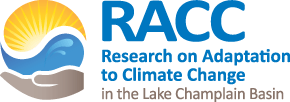By ELODIE REED
Messenger Staff Writer
ST. ALBANS — According to a recent University of Vermont (UVM) report, those living in Franklin and several other counties are less willing to contribute to clean water costs than Vermonters as a whole.
The report, released Nov. 19 and titled, “Value of Water Quality and Public Willingness to Pay for Water Quality Policy and Project Implementation,” is an analysis of two surveys conducted in 2013 and 2014.
The first, a “Water Quality Public Opinion Survey” created by the Research on Adaptation to Climate Change in the Lake Champlain Basin (RACC) program in 2013, asked Vermonters a number of questions about their perceptions of water quality. Perhaps most prominently, results showed that Vermonters “are deeply concerned about water quality” – more than 95 percent of respondents marked water quality as “moderately important” or “very important.”
The survey also indicated that Vermont residents believe water quality should be a state-level responsibility that is clearly designated, think adequate funding should go towards water quality, and have a fairly high level of confidence in experts on climate change.
In addition, the survey shows that socioeconomic, cultural and life stage factors influence Vermonters’ perception of water quality-related issues.
“It’s pretty consistent, the data on environmental [or] pro-environmental beliefs and attitudes,” said Chris Koliba, one of the RACC social science researchers, and a professor of community development at UVM. “It’s pretty routinely tied to income and education levels.”
He added, “I think we actually have a [relatively] larger proportion of folks with a pro-environmental focus.”
While the initial RACC survey showed that Vermonters were somewhat hesitant to pay for improving water quality, the 2014 Vermonter Poll provided new results. When asked whether they would pay extra, for instance, on water utility bills or vehicle registration fees in order to fund water quality efforts, 65 percent of Vermonters said “yes.”
Based on those results, the UVM report estimates there’s a mean willingness for residents to pay a $20 added flat fee on current water utility bills and a $20 flat fee on vehicle registration. With an estimated 189,552 households paying extra on their water bills and 605,000 vehicle owners paying more for their registration, about $16 million would be raised per year for water quality policy and implementation.
This amounts to around 10 percent of the $156 million Vermont’s Agency of Natural Resources said is needed annually over the next ten years to adequately improve water quality and meet Clean Water Act Standards.
While most counties indicated a willingness to contribute $40 extra per year for water quality, five counties did not: Caledonia, Essex, Lamoille, Orange and Franklin.
“Our intent is not to think that Franklin County residents are unwilling [to pay],” said Koliba. “They are just less willing.”
He added, “We’re not trying to point fingers. What these findings suggest is some opportunities to reach out to other segments of the population.”
Geographic relation to Vermont’s water bodies appeared to not be a factor in the survey in the results, and Koliba said this was both a good and bad thing.
“It’s not just a geographically bound opinion. That’s a double-edged sword,” he said. While there are Vermonters statewide that want to help clean up water problems that affect people in places such as Franklin County the most, those who are closest to the water bodies and contribute largely to their pollution – for instance, through agricultural activities – don’t appear as willing to pitch in to help.
Koliba looked on the bright side. “The good news is the rest of the state wants to help,” he said. “That’s a good thing for Franklin County.”
There are also some caveats within the 2013 and 2014 surveys that could mean the results need to be updated. One factor to be taken into account, for instance, is that the 2014 Vermonter Poll survey was administered in March of this year, before the surge in summer algal blooms and attention to the problem.
“It would be interesting to see if this summer’s high concentration of algae blooms may have had a change on perception,” said Koliba. When asked if another survey on water quality would be distributed to Vermonters, he replied that RACC hasn’t discussed that possibility, but it could happen.
“I’m curious to do that,” Koliba said.
Other projects
In addition to another potential water quality survey, the RACC has other ongoing projects specifically in the Franklin County area.
Funded through a five-year National Science Foundation grant, RACC has four groups doing work. Koliba’s group does research into decision-making and policy related to the environment. Another group is working on climate change projections on the local landscape 40 to 50 years into the future, and a third is monitoring rivers to look at sediment transportation.
That group is currently looking at a land-use transition model in the Missisquoi watershed.
The last group, which monitors lakes, focused its work in the Missisquoi Bay this past summer. According to Koliba, the group monitored algal blooms in order to discover more about their cause and effect, what makes them grow worse and what makes them decrease.
That data is currently being compiled and analyzed. “We’ll have some concrete results soon,” Koliba said.
